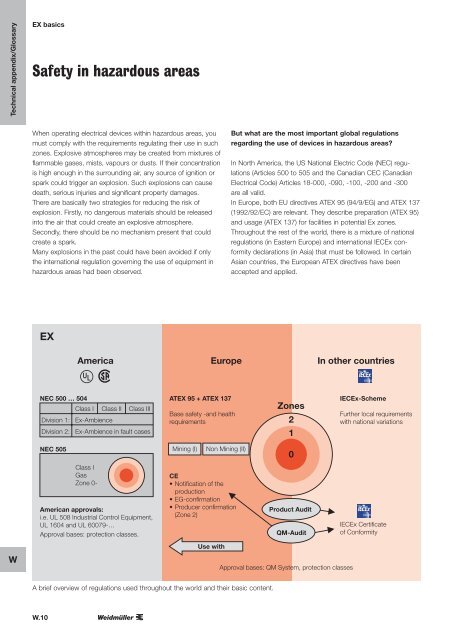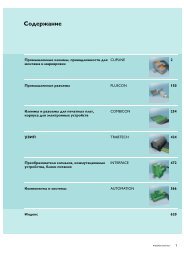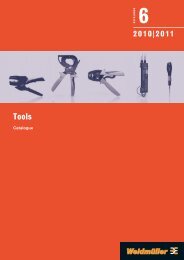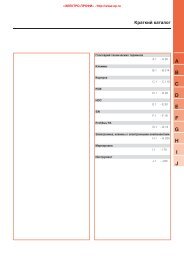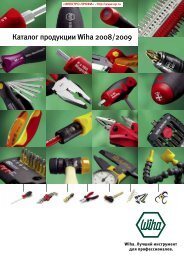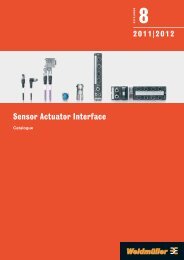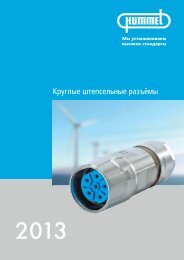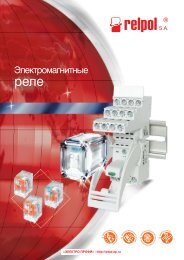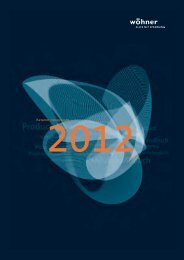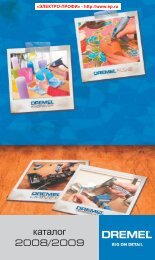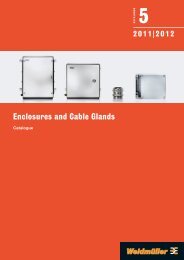ÐаÑалог Weidmuller: Electronics - Analogue Signal Conditioning
ÐаÑалог Weidmuller: Electronics - Analogue Signal Conditioning
ÐаÑалог Weidmuller: Electronics - Analogue Signal Conditioning
You also want an ePaper? Increase the reach of your titles
YUMPU automatically turns print PDFs into web optimized ePapers that Google loves.
Technical appendix/Glossary<br />
EX basics<br />
Safety in hazardous areas<br />
When operating electrical devices within hazardous areas, you<br />
must comply with the requirements regulating their use in such<br />
zones. Explosive atmospheres may be created from mixtures of<br />
flammable gases, mists, vapours or dusts. If their concentration<br />
is high enough in the surrounding air, any source of ignition or<br />
spark could trigger an explosion. Such explosions can cause<br />
death, serious injuries and significant property damages.<br />
There are basically two strategies for reducing the risk of<br />
explosion. Firstly, no dangerous materials should be released<br />
into the air that could create an explosive atmosphere.<br />
Secondly, there should be no mechanism present that could<br />
create a spark.<br />
Many explosions in the past could have been avoided if only<br />
the international regulation governing the use of equipment in<br />
hazardous areas had been observed.<br />
But what are the most important global regulations<br />
regarding the use of devices in hazardous areas<br />
In North America, the US National Electric Code (NEC) regulations<br />
(Articles 500 to 505 and the Canadian CEC (Canadian<br />
Electrical Code) Articles 18-000, -090, -100, -200 and -300<br />
are all valid.<br />
In Europe, both EU directives ATEX 95 (94/9/EG) and ATEX 137<br />
(1992/92/EC) are relevant. They describe preparation (ATEX 95)<br />
and usage (ATEX 137) for facilities in potential Ex zones.<br />
Throughout the rest of the world, there is a mixture of national<br />
regulations (in Eastern Europe) and international IECEx conformity<br />
declarations (in Asia) that must be followed. In certain<br />
Asian countries, the European ATEX directives have been<br />
accepted and applied.<br />
EX<br />
America<br />
v r<br />
Europe<br />
In other countries<br />
NEC 500 … 504 ATEX 95 + ATEX 137<br />
Class I Class II Class III<br />
Base safety -and health<br />
Division 1: Ex-Ambience<br />
requirements<br />
Division 2: Ex-Ambience in fault cases<br />
Zones<br />
2<br />
1<br />
IECEx-Scheme<br />
Further local requirements<br />
with national variations<br />
NEC 505<br />
Mining (I)<br />
Non Mining (II)<br />
0<br />
Class I<br />
Gas<br />
Zone 0-<br />
American approvals:<br />
i.e. UL 508 Industrial Control Equipment,<br />
UL 1604 and UL 60079-…<br />
Approval bases: protection classes.<br />
CE<br />
• Notification of the<br />
production<br />
• EG-confirmation<br />
• Producer confirmation<br />
(Zone 2)<br />
Product Audit<br />
QM-Audit<br />
IECEx Certificate<br />
of Conformity<br />
W<br />
Use with<br />
Approval bases: QM System, protection classes<br />
A brief overview of regulations used throughout the world and their basic content.<br />
W.10


